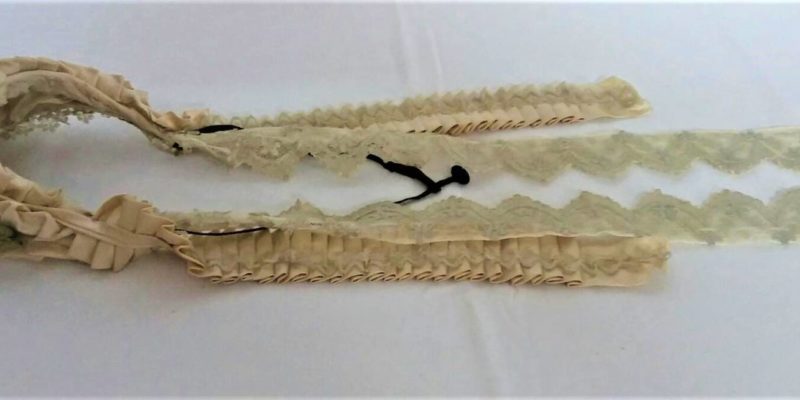In terms of technique, the Koper collection mostly has bobbin, needle, crocheted, filet, machine-made and mixed lace:
Bobbin lace
Making lace on a pillow (called a punkelj, bula or tombolo in Slovenia) with small wooden spindles or bobbins developed in the 16th century in Germany. The bobbins, originally made from animal bone (wealthy town ladies used ivory bobbins), were wound with linen, cotton or silk thread which formed the design. The lacemakers would first hold the oval pillow in their lap, then attach it to a surface, and later place it in a basket. To make lace, you also need a pattern with a design and pins.
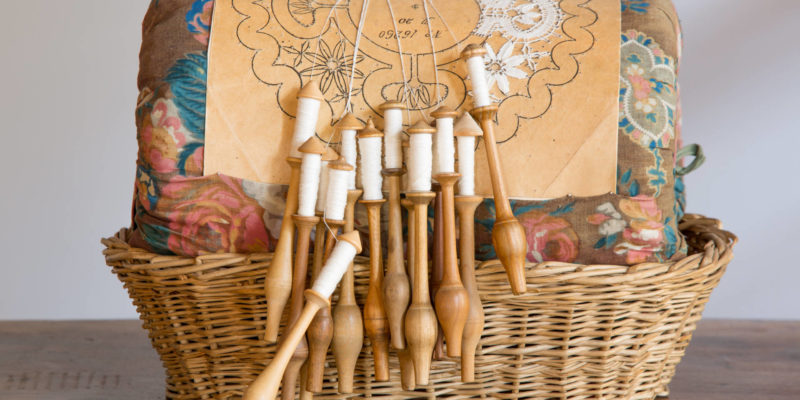
Needle lace
The basic principle of making needle lace is to draw threads from the fabric and then stitch the edges of the resulting gap. Several threads can be drawn at the same time to create a net base in the fabric, and these remaining warp and weft threads are then stitched over with a needle to create various designs and motifs. In Istrian traditional women’s costume, needle lace takes the form of a decorative insert, at first on the cuffs and later along the entire length of the sleeves. The most common motifs on the cuffs include vegetation ornaments, whereas the sleeve inserts often feature, along with various meshwork, strings of connected circles, called špice na kule in Istria. Needle lace on the garments of Istrian dress is always framed by contrasting black or brown bands embroidered with single or, more frequently, double chain stitches.
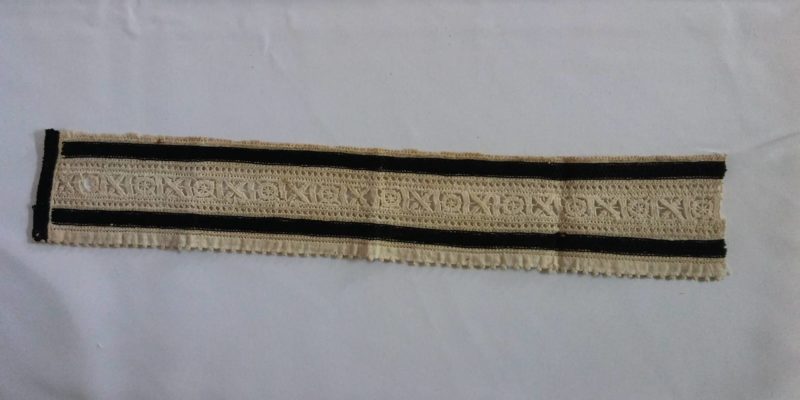
Crocheted lace
In the Slovenian lands, crocheted lace became popular at the turn of the 20th century. It is made with a crochet hook using white or coloured crochet thread, mostly cotton. Initially, pointy borders and airy lace inserts were only used to embellish bed linen and kitchen canvas articles, later underwear, and later still women’s and also men’s clothing, which eventually became fully crocheted products.
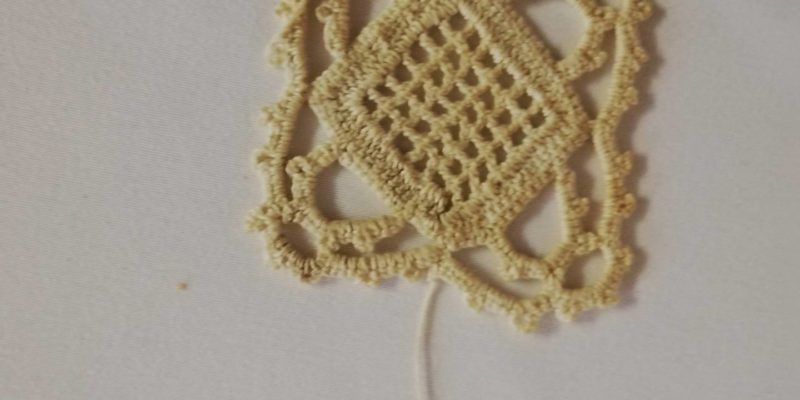
Filet lace
In the late 19th century, there was a growing fashion trend for filet or net lace as part of home textiles. First, a net was crafted by hand with a special needle, gauging stick and thread, and stretched on a frame. Then the net was worked with a needle and thread using various stitches to create a design. Filet lace was used as a finishing border or ornamental insert on bed and kitchen linen or room textiles.
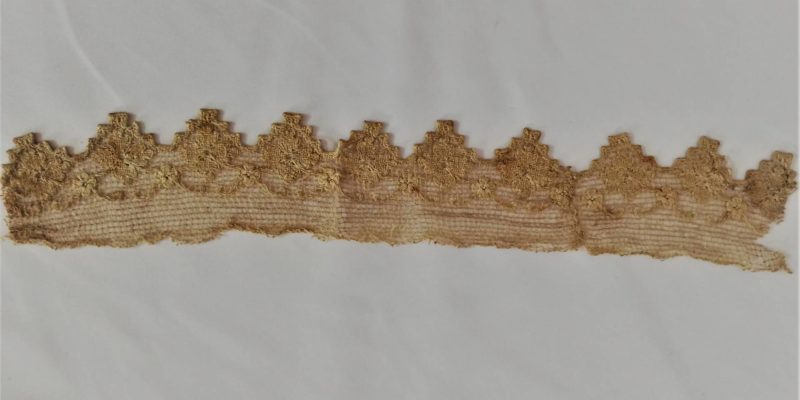
Machine-made lace
Machine-made lace spread gradually from the 19th century onwards as the bobbinet machines developed. These machines could weave thin nets – tulle – as a base for handmade lace designs. Bobbinet tulle is made from silk, cotton and synthetic fibres. In the 1830s, bobbinet machines were complemented with the jacquard system, which enabled lace to be manufactured entirely by machine.
From the late 19th century, and particularly in the 20th century, machine-made lace and embroidery became increasingly used to decorate commercially ready-made clothing, linen and home textiles. Their affordability meant that they were no longer limited to the upper classes, but could be enjoyed by the working class and rural population as well.
